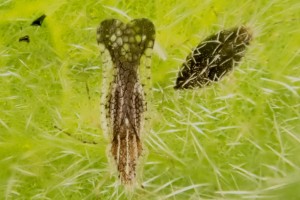The original native range of hibiscus bur (Urena lobata) is uncertain with limited data suggesting Asia. The plant has been introduced to many countries including parts of North America, Africa, and the Pacific either accidentally or as a fibre crop.
The cotton-like fibre that surrounds the seeds has been used as an alternative to down as filling in mattresses, pillows, and upholstery etc, but it is difficult to spin, and synthetic fibres and jute are far more commonly used these days. Parts of the plant have also been used as traditional medicine for a range of ailments.
Hibiscus bur is now considered a serious weed in many places, such as Fiji, Vanuatu, Cuba, and the United States where it forms dense patches and monospecific stands.
Impacts
Hibiscus bur can rapidly colonise disturbed areas and is tolerant of a wide range of soil types and elevations. Pastures, grasslands, cane fields, plantations, gardens, roadsides, clearings and wasteland are all at risk of invasion by this shrub impacting food security. In Vanuatu it is estimated that a third of pasture is currently lost to this weed.
The impacts of hibiscus bur are expected to increase in the future, as it continues to spread and colonize new areas. Hibiscus bur’s ability to thrive in a variety of soil types and climatic conditions makes it particularly well-suited to take advantage of changing environmental conditions, including those caused by climate change.
Control methods
Controlling hibiscus bur is a time-consuming and expensive process. Herbicides can provide good control but are often too expensive and there is potential for harm if not used safely. Mechanical control appears to be less effective and requires expensive equipment. Hand pulling is restricted to small plants so often impractical. However, a new approach involving natural enemies now offers some hope for controlling hibiscus bur.
A leaf-feeding lace bug (Haedus vicarius) is being deployed in the Pacific which is expected to be able to provide effective control of this weed as it can severely damage this plant.

